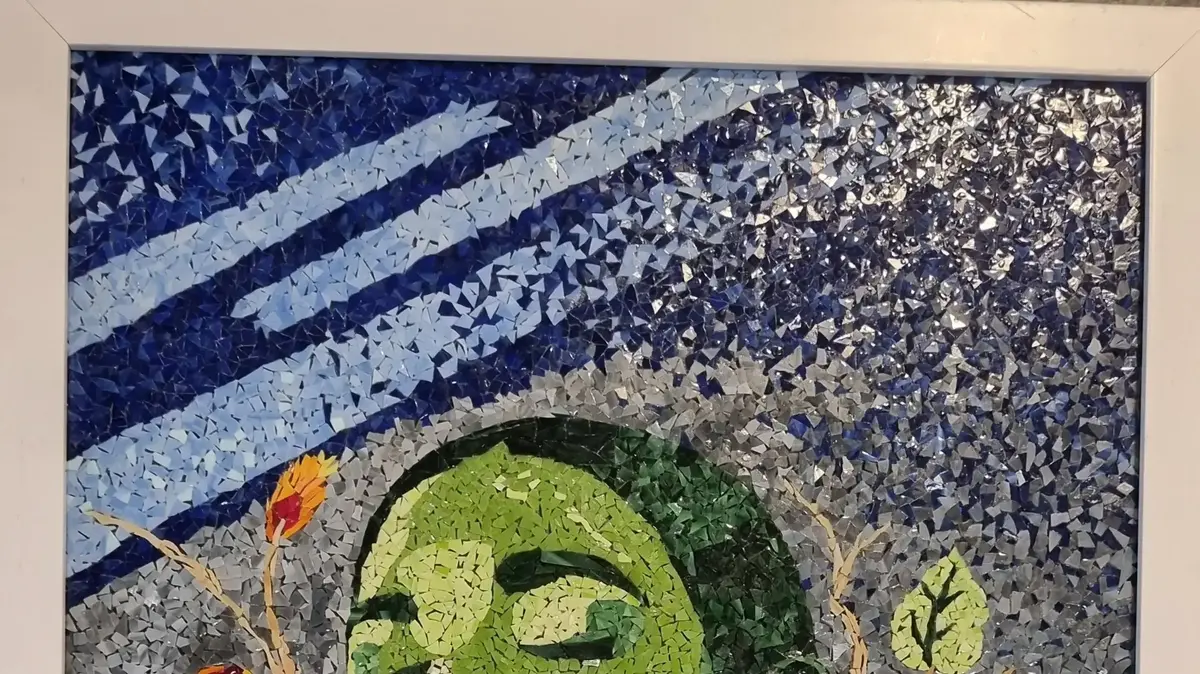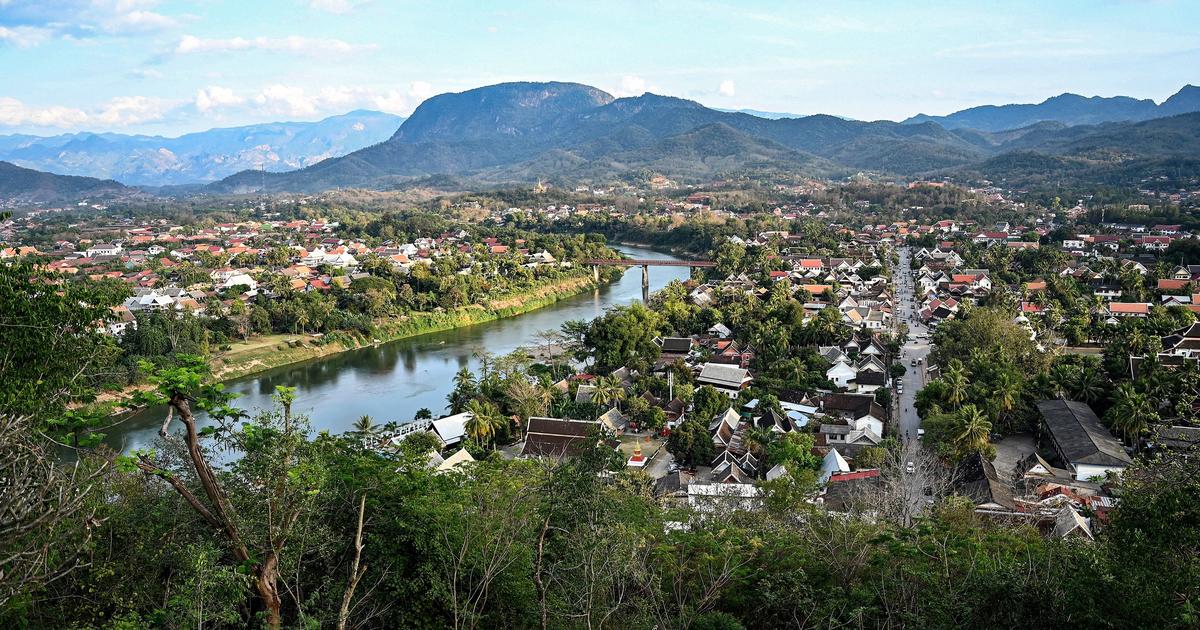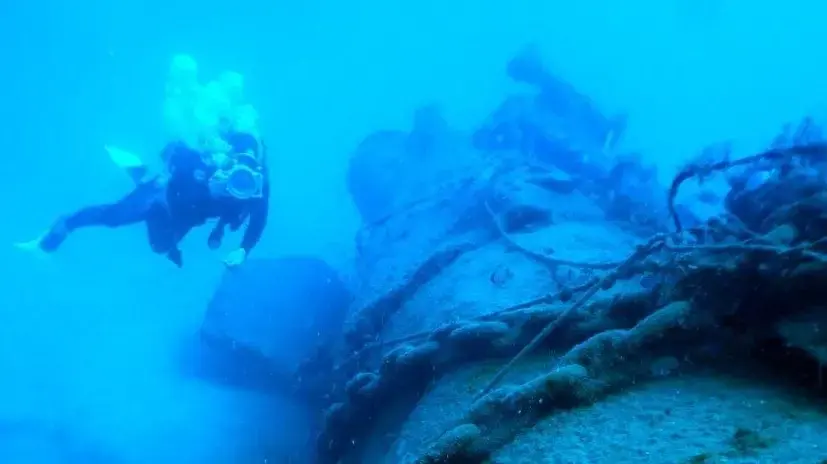On the ninth day of the Russian invasion of Ukraine, in which the Ukrainian government estimates that more than 2,000 civilians have died, different international organizations also warn about the possible loss of heritage.
The first notable loss in this regard has been the Ivankiv Historical and Cultural Museum, located some 70 kilometers northwest of Kiev.
The building, founded in 1981 and now set on fire by Russian troops, kept among its collection 25 paintings by Maria Primachenko, one of the most notable Ukrainian painters and a representative of naive art.
The Ukrainian Foreign Ministry considers that “he created world-famous masterpieces.
Her special gift and talent captivated Pablo Picasso”.
With the arrival of Putin's army in the capital, sights are now set on the Saint Sophia Cathedral,
More information
War in Ukraine, last minute live
The Ukrainian embassy to the Vatican has asked the Russian government on Tuesday not to destroy it, something that is not ruled out that it will happen in the next few hours, as reported by the Ukrainian intelligence services.
“According to data from the Intelligence services, the Russians are preparing an air attack against the Saint Sophia Cathedral in Kiev, a UNESCO World Heritage Site,” the embassy wrote on its Twitter account, which ensures that the temple, from the 11th century, is “the pearl of Ukraine”.
"WE APPEAL TO THE RUSSIANS: DO NOT COMMIT THIS CRIME!!!" added the diplomatic legation in a desperate request on social networks.
The International Council on Monuments and Sites (ICOMOS), an international non-governmental organization associated with UNESCO, has also shown its concern.
The entity "fears that serious threats weigh on Ukraine's assets," as expressed in a statement.
"Icomos reminds the parties involved of the extreme fragility of cultural heritage during armed conflicts, even when they are unintentional damages", signs the council, which reminds the parties involved that safeguarding art is one of the commitments assumed under the Cultural Conventions from Unesco.
The Smithsonian Institution, an education and research center administered by the United States, which also has a list of associated museums, has also called for the protection of cultural properties.
“The beauty of Ukraine's art, architecture, literature and music has flourished for decades;
its museums are some of the most revered in Europe,” Smithsonian Secretary Lonnie Bunch said in a statement Thursday.
"If we want to reach a time when people of all cultures, creeds and nationalities can peacefully coexist, we must first understand ourselves and each other."
The institute has given the green light to a plan to try to protect and rescue as many pieces as possible from the war.
The director of the National Museum of Ukraine, Fedir Androshchuk, also does not rule out the possibility that, beyond destroying its assets, the Russian army loots them to take them to his country, as he has communicated through an email: "There is no guarantee that the Ukrainian Cultural Heritage is not looted and transferred to Russian museums, especially considering that Kiev occupies a special place in Putin's interpretation of Russian history and its roots.
Many finds made in Ukraine during the 19th and early 20th centuries are already in the two best Russian museums.
And there is also evidence that objects from archaeological excavations in Crimea have been sent to the Hermitage Museum in St. Petersburg."
Among Ukraine's assets exposed to war and registered by UNESCO, the country has seven World Heritage sites, four elements of intangible cultural heritage and eight biosphere reserves, among others.
UNESCO highlights the following:
Saint Sophia Cathedral, ensemble of monastic buildings and Laura of Kievo-Petchersk
The Saint Sophia Cathedral in the Ukrainian capital. SERGEI SUPINSKY (AFP)
Designed to rival Hagia Sophia in Constantinople, the Hagia Sophia Cathedral in the Ukrainian capital is the symbol of the New Constantinople, a name given to the capital of the principality of Kiev, created in the 11th century in a region evangelized after the baptism of Saint Vladimir in the year 988. The spiritual and intellectual influence of the Kievo-Petchersk monastery contributed considerably to the spread of Orthodox faith and thought in the Russian world between the 17th and 19th centuries.
(Unesco/PM)
Lviv – Historic Center Ensemble
The city of Lviv, with medieval urban topography, in an undated image. Silvan Rehfeld
The Struve geodesic arc is a set of triangulations that extends through ten countries, along 2,820 km, from Hammerfest (Norway) to the Black Sea.
Composed of the points of the triangulation carried out between 1816 and 1855 by the astronomer Friedrich Georg Wilhelm Struve, this arc allowed the first precise measurement of a long segment of the terrestrial meridian.
This triangulation helped define and measure the exact shape of the Earth and played an important role in advancing the geological sciences and making accurate topographic maps.
It is an extraordinary example of scientific collaboration between scholars from different countries, as well as an example of cooperation between several European monarchs in favor of scientific progress.
Ancient and primary beech forests of the Carpathians and other regions of Europe
Yavoriv National Nature Park, about 30 kilometers from Lviv and with an area of 7,000 hectares, is one of the largest beech forests in the country.Mykola Swarnyk
This cross-border site covers a total of 12 countries.
Since the end of the ice age, the beech forests of Europe spread rapidly from a few isolated refuges in the Alps, the Carpathians, the Dinaric Alps, the Mediterranean and the Pyrenees, in a process that took a few thousand years and continues to this day. today.
The success of the expansion of the beech is explained by the flexibility of the species and its tolerance to different climatic, geographical and physical conditions.
The Residence of the Metropolitans of Bukovina and Dalmatia
The seminary church, with a cruciform plan surmounted by a dome, has a garden and a park.
It represents a synergy of architectural styles built by the Czech architect Josef Hlavka from 1864 to 1882. The site, partly in the Ukraine, is an outstanding example of 19th-century historicist architecture and includes a seminary and a monastery.
The seminary church, with a cruciform plan surmounted by a dome, has a garden and a park.
The complex expresses the architectural influences of the Byzantine period and embodies the presence that the Orthodox church had there during Habsburg rule.
Ancient city of the Tauric Chersonesus
The plots of this archaeological site were used to cultivate vineyards, whose production was exported by the city, which prospered until the fifteenth century.Unesco
The site presents the remains of a city founded by the Dorian Greeks in the 5th century BC on the north shore of the Black Sea.
It encompasses six sites with urban remains and agricultural land divided into several hundred chora, rectangular plots of equal size.
The plots were used to cultivate vineyards whose production was exported by the city, which prospered until the fifteenth century.
The site features several complexes of public buildings and residential neighborhoods, as well as Paleo-Christian monuments along with remains of settlements from the Stone and Bronze Ages;
Roman and medieval tower fortifications and water supply systems;
and exceptionally well-preserved examples of vineyard planting and dividing walls.
wooden tserkvas
The 'tserkvas' are built on a tripartite plan surmounted by quadrilateral or octagonal open domes. National Heritage Board of Poland
Designed to rival Hagia Sophia in Constantinople, the Hagia Sophia Cathedral in the Ukrainian capital is the symbol of the New Constantinople, a name given to the capital of the principality of Kiev, created in the 11th century in a region evangelized after the baptism of Saint Vladimir in the year 988. The spiritual and intellectual influence of the Kievo-Petchersk monastery contributed considerably to the spread of Orthodox faith and thought in the Russian world between the 17th and 19th centuries.
adrilateral or octagonal open.
They feature iconostasis screens, polychrome interior decorations, and other historic furnishings.
Important elements of some
tserkvas
include wooden bell towers, church yards, gatehouses, and cemeteries.
Struve Geodesic Arc
One of the triangulations that served to help define and measure the exact shape of the Earth.Natalia Golubnycha (Getty Images/iStockphoto)
The Struve geodesic arc is a set of triangulations that extends through ten countries, along 2,820 km, from Hammerfest (Norway) to the Black Sea.
Composed of the points of the triangulation carried out between 1816 and 1855 by the astronomer Friedrich Georg Wilhelm Struve, this arc allowed the first precise measurement of a long segment of the terrestrial meridian.
This triangulation helped define and measure the exact shape of the Earth and played an important role in advancing the geological sciences and making accurate topographic maps.
It is an extraordinary example of scientific collaboration between scholars from different countries, as well as an example of cooperation between several European monarchs in favor of scientific progress.
(Unesco/PM)

/cloudfront-eu-central-1.images.arcpublishing.com/prisa/W6L6A7D444X2WALUH2WSIAMW6M.jpg)







